Snails and Homes
One of the thoughts about snails is also the fact that I found them on the mountain. When I first landed here, the image of Barcelona being sandwiched by mountains and beaches is pretty awkward. I don't normally see these two landscapes at the same time. As I reached Camallera and found the snails, it was the similar experience as to collecting snails on the beach in Bali or even East Coast Park.
There is a conflict to understand the landscape. Where am I?
This struggle seems to be a parallel to identity friction exists in Singapore, or at least, to my personal experience in Singapore. Being an Indonesian who has been away from the country for half of my life, staying in Singapore but on the verge of migrating as my student visa is ending, national identity is an issue. And so what is called home.
I looked into the images of home of the snails. The shell becomes their portable houses.
This brings me back to how houses look like in Jakarta and Singapore, particularly those of higher status.
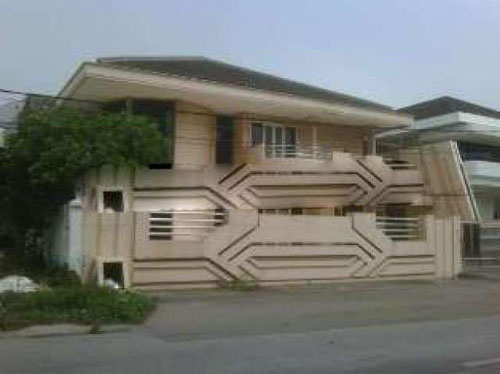
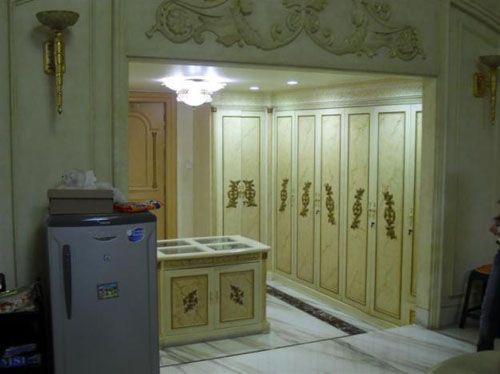
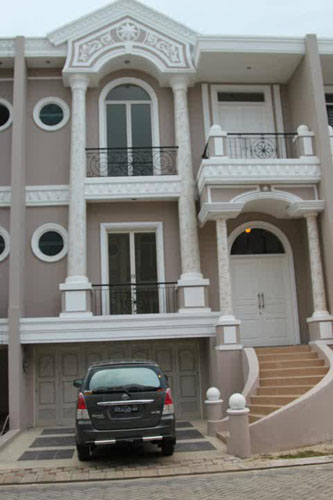
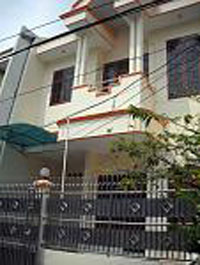
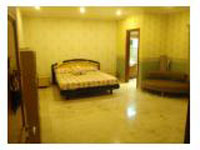
There's so much emphasis on bright colors, particularly gold, yellow and green. Walls are mostly wallpapered with intricate patterns. Many designs are made out of spirals.
The houses tend to have columns, almost mimicking ancient Greece architecture, large mirrored windows, two-three floored and many comes with swimming pools and indoor gardens.
To own and live in such houses become a representation of status symbol and wealth, while maintenance is extremely difficult and expensive.
An example will be the house in the Keong Mas film or even the trend of Sentosa Cove and Bukit Timah area in Singapore.
So far, I have not seen these kind of houses in Catalan.
Why emphasis on such houses?
Linking back to the snails mutation, the color of the shells get brighter and hence they look different. In human perspective, they get more beautiful and maybe in animal language too, as animals tend to attract each other by using bright colors. There is then a social hierarchy existing within the snails. Similarly to human houses, those who are brighter, tend to be more visually visible.
However, in the snails' case, the bright shells are product of mutation. This makes them 'weird' or 'reject'. Again, this comparison is based on humans-humans relationship regarding natural mutation and I am reflecting this on the snails. This concludes the subject as "beautiful rejects".
And so is the Keong Mas. Dewi Chandra in the folklore is a pretty princess or lady or young lady or woman (depending on which version) and was turned as snail, basically mutated into an animal.
In popular story-telling, who are the beautiful rejects? Referring back to the film, it is Dewi who becomes more like the 'maid' of the family. While Ajeng on comparison is the 'mistress' of the household. In Telenovela (Latin American/Spanish/Philippino soap opera), the portrayal of "beautiful rejects" is common. Latin America telenovela was very popular in Indonesia in 1990s and I remember one where the main character was a very beautiful maid who married the heir of the household but was kicked out of the house by the jealous family and she became a very famous singer. There was a scene where she was asked to pick up the family's jewel thrown on dung with her mouth, which she later ordered the same when she was famous and managed to re-marry the man.
And so I am interested in the idea of rejects, represented by the Keong Mas as a 'maid'.
Back to the snails, painting them gold was also an interesting process.
I have picked up quite a different patterns but as they are painted, they become homogenous. It gives a rather plastic and fake look as well.
Take a look at some photos of the snails in the wild.
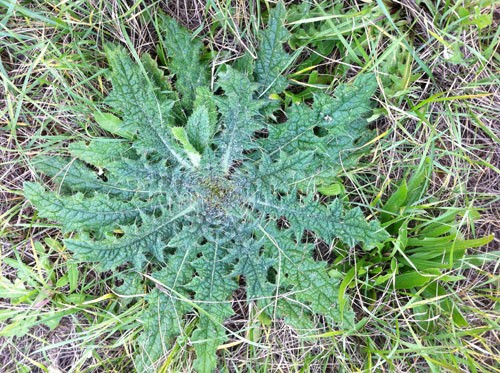
a very weird plant
some new 2D explorations


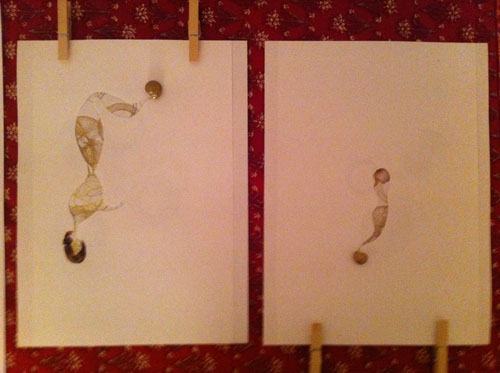
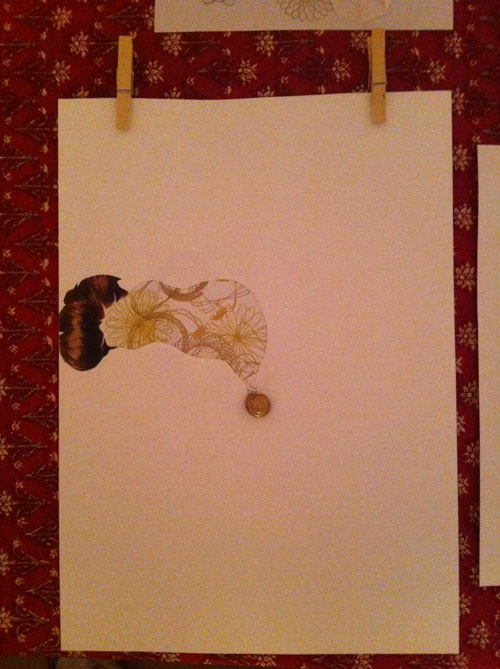
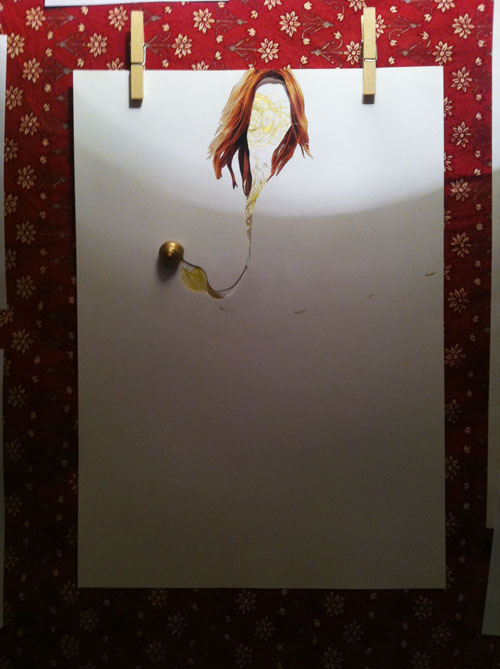
why hair?
It simply started with visual interest but then I am trying to create this idea of sexless gender, where although the hair seems feminine, I'm creating a rather 'male' being. This is pretty much a plan, it will most probably evolved. Gender is highlighted.
But I managed to get this small magazine about hair, which is great. And as I was flipping through, it came to me that in Indonesia, for a woman, to have huge hair is a reflection of her status symbol.
I think it also links to how the Keong Mas now is considered to be a helper or a maid, but at the same time there is this twist of social hierarchy. She was a princess but humbled herself to pay the kindness of a poor old woman.
And so, I was playing around with Clara's camera and
managed to try out couple of shots and video for the piece. The idea is
to film the Mas Keong (the artist) cleaning the house and cooking while Cak Rondo (the viewers) peeking into the house.
Some photos of a potential 'peeking spots' into the house.
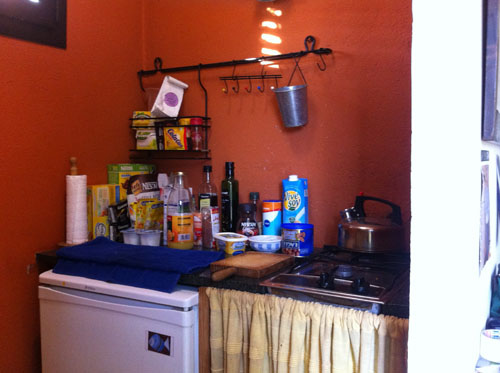
And some fast exploration on the video point of view.
From here on, the characters in this project are:
1. Mas Keong (instead of Keong Mas) which means Mr. Snail
'mas' means gold is the short form of 'emas' which is a legitimate vocabulary for gold in Bahasa Indonesia.
'mas' can also mean mister or brother, usually males who are still young. this is a rather informal manner.
'mas' also can mean to call male servants.
2. Cak Rondo (instead of Mbo Rondo) which means Mr. Rondo
'mbo' means mrs, but usually used to call the older female person. 'mba' or 'mbak' is to call female servants, antonym of 'mas'.
'cak' means mr., used to call the older male person.
Video POV#1
Mas Keong is preparing food. Cak Rondo is peeking in from outside her house.
Video POV#2
Mas Keong is doing the bed. Cak Rondo is peeking in from the living room.
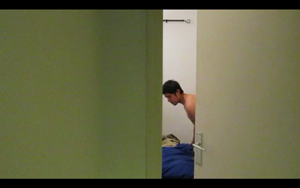
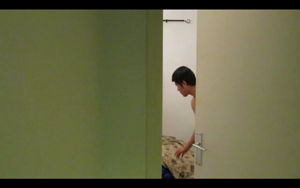
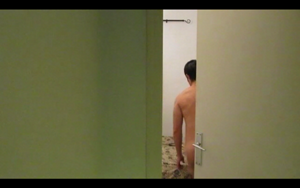


Attempting to portray Mas Keong as a naked figure with long blonde hair. This is inspired by the drawings.
Not important, but interesting
California Gold Rush
Gold Handkerchief
And also it's Christmas. Gold color seems to be everywhere.